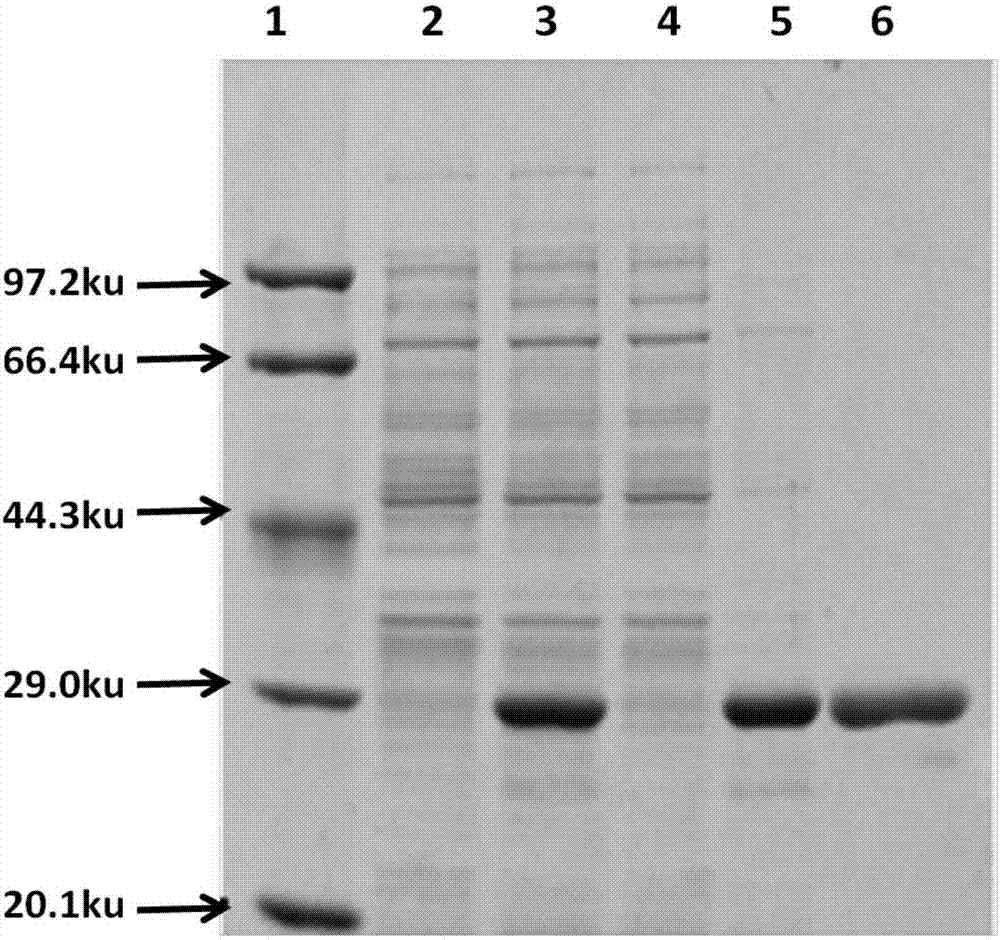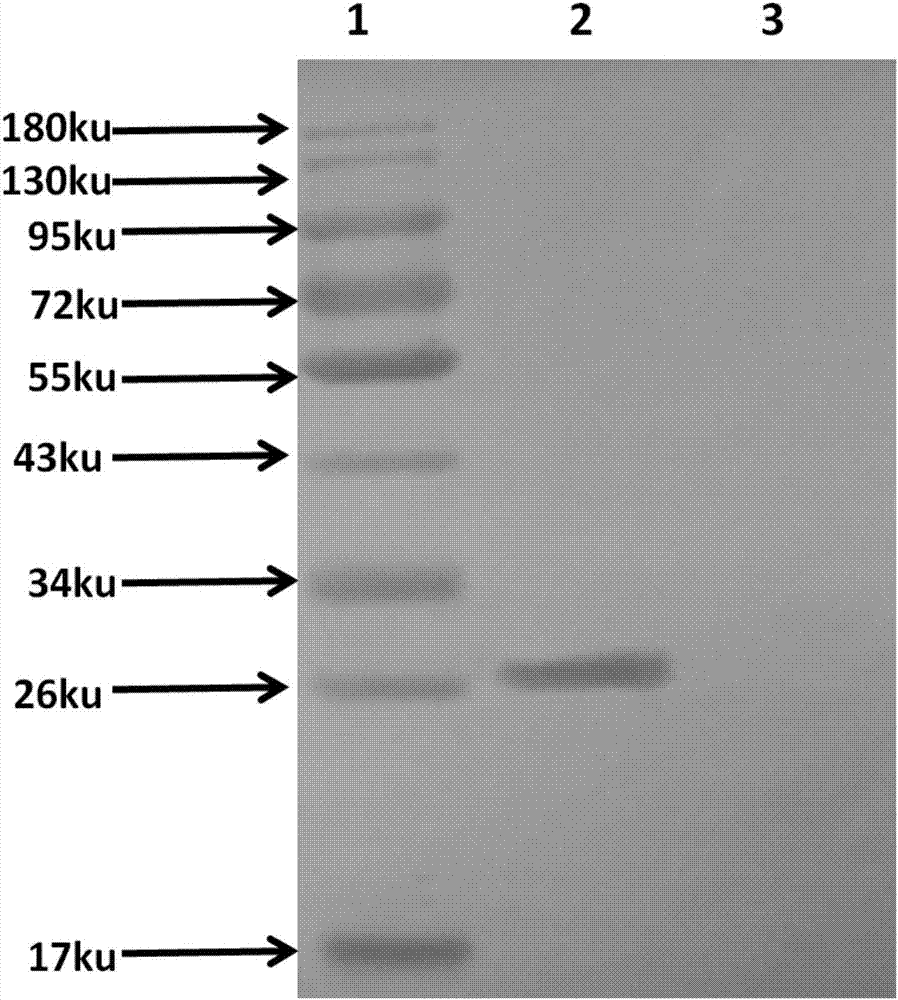Enzyme-linked immunosorbent assay (ELISA) test kit for testing lawsonia intracellularis (LI) of pigs
A detection kit, Lawsonia technology, applied in measurement devices, instruments, scientific instruments, etc., can solve the problems of low LsaA protein expression, low utilization rate, etc., and achieve short detection time, high utilization rate, and good stability. Effect
- Summary
- Abstract
- Description
- Claims
- Application Information
AI Technical Summary
Problems solved by technology
Method used
Image
Examples
Embodiment 1
[0044] Example 1: Synthesis of opt-LsaA gene and construction of recombinant expression vector pET-32a-opt-LsaA
[0045] According to the codon preference of Escherichia coli, the present invention conducts DNA analysis and RNA structure prediction on the LsaA gene sequence of Lawsonia intracellularis (accession number AF498259) registered in GenBank, and synthesizes the code without changing the amino acid sequence of the LsaA protein. The LsaA gene of the LsaA protein is artificially optimized to obtain the opt-LsaA gene, and the nucleotide sequence of the artificially optimized and synthesized opt-LsaA gene is shown in SEQ ID NO.2.
[0046] Add the NdeI restriction endonuclease recognition site at the 5' end of the opt-LsaA gene sequence artificially optimized and synthesized above, and add the XhoI restriction endonuclease recognition site at its 3' end; opt-LsaA The gene and the pET-32a vector were double-digested with NdeI and XhoI restriction endonucleases, and the dige...
Embodiment 2
[0047] Example 2: Induced expression and purification of LsaA recombinant protein
[0048] The correct recombinant expression vector pET-32a-opt-LsaA sequenced in Example 1 was transformed into E.coli BL21 (DE3) competent cells, and then the transformed E.coli BL21 (DE3) was coated to contain 100 μg. mL -1 Amp LB solid culture plate, culture overnight at 37°C. Pick a single colony on the next day containing 100 μg·mL -1 In LB liquid medium of Amp, 37°C 250r·min -1 , cultured to OD 600nm About 0.8, add IPTG to the final concentration of 0.1mmol·L -1 , 37℃, 250r·min -1 Shaking induced culture for 6h. Centrifuge the induced bacterial solution at 4000rpm for 10min, discard the supernatant, and collect the bacterial pellet; resuspend the pellet with 0.1M PBS, sonicate for 5min (sonication for 9s, stop for 6s) to break the bacterial cell, and then centrifuge at 10000rpm at 4°C for 10min , collect the supernatant and the precipitate respectively, resuspend the precipitate with...
Embodiment 3
[0049] Embodiment 3: Identification of LsaA recombinant protein
[0050] The antigenicity of the purified LsaA recombinant protein was analyzed by Western blot. The specific operation was as follows: the LsaA recombinant protein separated by SDS-PAGE electrophoresis was transferred to a nitrocellulose membrane, and the nitrocellulose membrane was placed in a 5 % (w / v) skimmed milk powder blocking solution overnight at 4°C. Porcine anti-Lawsonia intracellulare positive serum was diluted with PBS buffer containing 5% (w / v) skimmed milk and 0.5% (v / v) Tween-20 at a volume ratio of 1:200 as the primary antibody , incubate at 37°C for 2h, wash the membrane and dilute horseradish peroxidation with PBS buffer containing 5% (w / v) skimmed milk and 0.5% (v / v) Tween-20 according to the volume ratio of 1:5000 Phytosome-labeled rabbit anti-pig IgG was used as a secondary antibody, incubated at 37°C for 2 hours, and finally developed with a DAB color development kit (purchased from Wuhan B...
PUM
 Login to View More
Login to View More Abstract
Description
Claims
Application Information
 Login to View More
Login to View More - Generate Ideas
- Intellectual Property
- Life Sciences
- Materials
- Tech Scout
- Unparalleled Data Quality
- Higher Quality Content
- 60% Fewer Hallucinations
Browse by: Latest US Patents, China's latest patents, Technical Efficacy Thesaurus, Application Domain, Technology Topic, Popular Technical Reports.
© 2025 PatSnap. All rights reserved.Legal|Privacy policy|Modern Slavery Act Transparency Statement|Sitemap|About US| Contact US: help@patsnap.com



